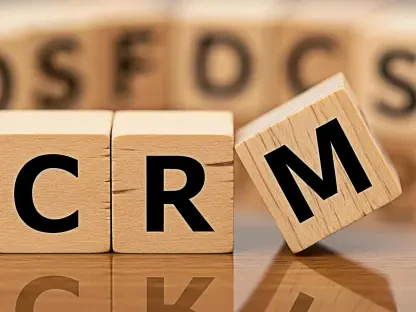Email marketing has come a long way since Gary Thuerk sent out the first-ever mass-email in 1978—back then, 400 recipients were considered a “mass”. Nevertheless, this email blast resulted in about $13 million in sales. Today, email marketing is still going strong, with a whopping ROI of 4400%, according to Optinmonster.
While the popularity of email marketing has not yet diminished, plenty has changed in the past four decades. Yesterday’s good practices have become today’s big no-nos while trends have come and gone.
With 2020 in full bloom, this is the perfect time to talk about the trends that are going to shake the email marketing scene this year. Discover them now:
1. The Dominance of Artificial Intelligence
The amount of data available to marketers increases continually. This, of course, is wonderful news, except for the fact that it makes it increasingly difficult for people to manage the vast amounts of data. The solution? Artificial intelligence (AI).
AI can sort through data points with the speed and efficiency a human being could simply never achieve. It can set up automated campaigns based on a customer’s stage in their purchase process. It uses information like interest, purchases already made, as well as browsing behavior to create meaningful and targeted campaigns. In addition, it can predict the actions of subscribers and provide suggestions on what you can do to retain their loyalty.
According to Smartinsights, the main benefits of AI include increased engagement, the discovery of new segments, and email timing calibration. AI adoption by marketers has grown by 44% since 2017, according to a report by Salesforce. In 2020, we are expecting an even bigger growth in the use of AI for marketing campaigns, and by extension, in email marketing.
2. Get Close & Personal with Personalization
Another key benefit of pairing AI with marketing is personalization. The same report done by SalesForce mentions that 88% of customers are ready to share data if it will get them personalized offers.
AI is great for analyzing your customers’ behavior and interests, information which then can be used to generate customized emails. There are plenty of software solutions available that allow you to tailor emails to the device, demographics, and purchase history of each customer.
It’s no secret that consumers want to read emails that are relevant to them, which means that the personalization aspect of email marketing is expected to grow both in use and complexity in the year ahead.
3. Get Comfortable with Interactivity
Design
According to Litmus, interactivity is a top email marketing trend this year. Yet almost 50% of marketers have yet to try interactive designs, nor are they planning to do so in the near future. Why? It could have something to do with the fact that the coding required intimidates marketers who view it as “a tactic reserved for the biggest companies”.
Still, the whole point of email marketing is to win over potential customers and to further engage current ones and keep them loyal. And what better way to do so than with the help of visuals?
If you’d like to get a taste of interactive emails without getting too involved with the developmental aspect, Litmus advises experimenting with hover effects. They’re simple yet powerful, providing an efficient and clever way of sending your message across.
Social Media
Another thing you should understand about interactivity is that it’s multifaceted and it doesn’t stop at design. Another way to yield the benefits of this tactic is via social media integration. In 2018, there were 243.6 million social media users in the US alone, and that number is expected to reach 257.4 million by 2023, according to Statista.
What this means is that integrating social media into your email marketing strategy gives you a new way of reaching your target audience. It’s very likely that we will see a lot of this in 2020 as more and more brands started revamping their social media presence.
Videos
Videos also make for interactive elements and chances are, they will become an essential part of email marketing efforts. If you’re selling physical products, videos can enable you to showcase their features better. For software solutions, they can help you show them in action. The possibilities are endless, once you start to entertain them.
4. (Even) More Focus on Mobile
In March 2019, 61.9% of opened emails were accessed from mobile devices, according to statistics from Adestra. Because of that, companies will have to start creating emails with mobile in mind. Otherwise, they risk alienating their customers and having their marketing efforts rendered nil.
5. Increase in Quality and Decrease in Quantity
Let’s face it: everyone is busy, and as much as we may like to pretend like our customers are the exception, they are not. In 2015, an office worker would receive about 121 emails per day. Today, the total number of emails sent worldwide continues to grow by approximately 5% each year. With that in mind, focus on keeping your emails short and to the point.
6. Accessibility for More Inclusivity
Another benefit of keeping emails short and sweet is that you’re making them more accessible and engaging, two big trends for the year ahead.
Indeed, more and more voice assistants have been popping up in the past few years. While current email capabilities for voice assistants are limited, with our increasing lack of patience, they are sure to improve.
In 2020, we can start making emails more accessible, with a few simple alterations, according to Wishpond. Try to use short sentences, limit the use of jargon and you’re already one step closer to inclusivity.
2020 will mark a new opportunity for marketers to leverage AI in order to create email marketing campaigns that are better suited to their readers’ preferences and abilities.
Whether it’s crafting content that reads well on mobile devices or presenting more information with fewer words, all of the trends mentioned above have but one thing in common: customer-centricity.









